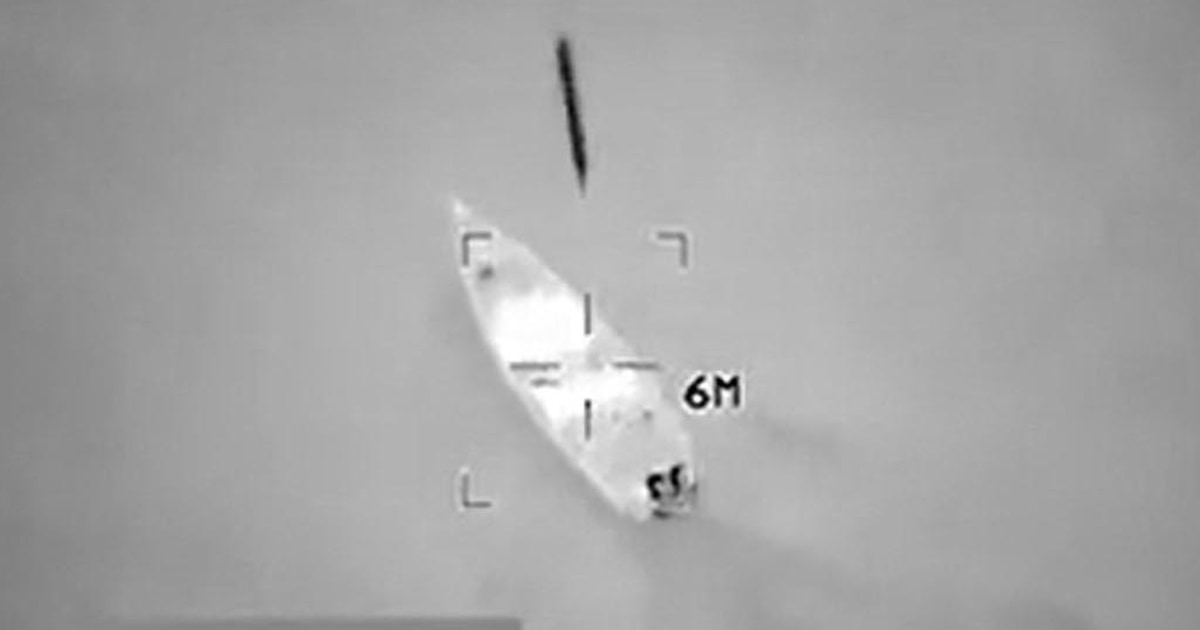Strategic Shift: US Military Expands Pacific Interdiction to Disrupt Cocaine Trade
#us_military #drug_trafficking #international_relations #geopolitics

Strategic Shift in US Military Operations
The Pentagon has recently redirected its focus from the Caribbean Sea to the eastern Pacific Ocean for striking suspected narcotraffickers. This change stems from stronger intelligence linking cocaine trafficking routes directly to US drug markets, prompting a more targeted approach in disrupting these networks.
Operational Expansion and Rationale
Since mid-2025, US military airstrikes have targeted vessels linked to criminal groups like Venezuela's Tren de Aragua and Colombia's National Liberation Army. The expansion into the Pacific reflects an effort to address the evolving maritime drug trade, believed to be a critical corridor for cocaine shipments destined for the US. This shift aims to enhance the effectiveness of interdiction and dismantle supply chains at their source.
Controversies and Consequences
Despite the Pentagon’s stated objectives, these operations have sparked international debate. Critics argue the strikes may violate international law and exacerbate regional tensions, particularly with Venezuela, which accuses the US of extrajudicial killings and political motives beyond combating drug trafficking.
About the Organizations Mentioned
The Pentagon
The Pentagon is the headquarters of the United States Department of Defense (DoD), serving as the central hub for managing the U.S. military's global operations and national security. Originally designed as a temporary War Department building during World War II, the Pentagon's role expanded significantly after the 1947 National Security Act, which unified the War and Navy Departments and established the Air Force, creating the National Military Establishment—later renamed the DoD in 1949[1]. This building symbolizes American military power and strategic coordination through the Cold War and beyond. Historically, the Pentagon has overseen America’s military posture during major global conflicts and an intense arms race with the Soviet Union, necessitating a complete renovation in the late 20th century due to aging infrastructure. The renovation was completed by 2001, modernizing more than a million square feet of space to support advanced communications and computing technologies vital for national defense[1]. Today, the Pentagon manages an annual budget exceeding $890 billion, reflecting its role in maintaining U.S. military readiness and technological superiority[3]. A major focus in recent years has been integrating cutting-edge technologies such as artificial intelligence, cybersecurity, and zero trust security models, aiming for full implementation by 2027[2][6]. The Pentagon also actively invests in emerging sectors like space, microelectronics, and biochemicals to advance U.S. strategic advantages, facilitated by initiatives like the Office of Strategic Capital which channels private investment into defense technologies[4]. Notable aspects include its massive scale—covering 200 acres—and its symbolic status as a nerve center of American defense policy. It also supports a wide range of personnel services and volunteer organizations, such as the Armed Forces Hostess Association, which enhances morale and operations[1][7]. The Pentagon remains a critical institution at the intersection of military power, technology innovation, and national security policy.
Tren de Aragua
**Tren de Aragua** is a transnational criminal organization originating from Venezuela, primarily involved in drug trafficking, racketeering, sex trafficking, robbery, and firearms offenses. It is led by Héctor Rusthenford Guerrero Flores, known as "Niño Guerrero," who has been involved in criminal activities for over two decades[1][2][4]. The gang's origins trace back to the Tocorón prison (Aragua Penitentiary Center) in Venezuela, which served as its *de facto* headquarters. Despite Venezuelan security forces retaking this prison in 2023, the leadership managed to escape, allowing the organization to expand significantly. This expansion has been fueled by the mass migration of Venezuelans fleeing political and economic instability under President Nicolás Maduro’s regime, spreading Tren de Aragua's influence throughout Latin America and into the United States[1]. Tren de Aragua has become a major security concern internationally. For example, in Peru, the gang's presence in Lima led to xenophobic tensions against Venezuelan migrants. The gang's "Los Gallegos" chapter issued threats against Peruvians supporting xenophobia, escalating violence in local communities. In 2023 alone, authorities arrested at least 183 suspected members in Peru[1]. Recognizing the threat posed by Tren de Aragua, the U.S. government designated it as a Foreign Terrorist Organization in February 2025, following an executive order signed by former President Donald Trump. This designation enables the U.S. Treasury Department’s Office of Foreign Assets Control (OFAC) to freeze and block the gang’s assets in the United States and prohibit transactions with U.S. persons. Additionally, the U.S. has taken legal action against multiple members for their criminal activities, highlighting the ongoing effort to dismantle this organization[1][2][3][4]. Notable aspects of Tren de Aragua include its prison-based origins, transnational reach, and its role in exacer
National Liberation Army
The **National Liberation Army (ELN)** is a Marxist-Leninist guerrilla group founded in Colombia between 1963 and 1965 by urban intellectuals inspired by Fidel Castro’s Cuban revolution. The ELN combines Marxist ideology with liberation theology, a Christian movement emphasizing social justice and human rights, aiming to overthrow Colombia’s government and establish a leftist regime that empowers the poor and reduces foreign influence[1]. The ELN funds its activities primarily through kidnapping, ransom, extortion of oil and gas companies, and involvement in the illicit narcotics trade. It is notorious for attacking Colombia’s economic infrastructure, especially oil pipelines and electricity networks, using tactics such as bombings, ambushes, and roadblocks[2][6]. The group has about 1,500 combatants and operates mainly in rural, mountainous northern and northeastern Colombia, including border areas with Venezuela, where it also maintains cocaine trafficking infrastructure[2][3]. Historically, the ELN began an armed insurgency in 1964, often collaborating with or clashing against the Revolutionary Armed Forces of Colombia (FARC), another major guerrilla group. Notably, Catholic priest Camilo Torres joined the ELN in 1966, reflecting their blend of Marxism and Christian liberation theology[1]. Despite peace talks with the Colombian government in the 2010s, including a ceasefire in 2017, violent attacks have persisted, such as assaults on police academies and civilians, leading to resumed conflict[2][6]. The ELN is designated as a Foreign Terrorist Organization by the U.S. since 1997 due to its violent tactics and threats to regional stability[2]. Strategically, the ELN is part of a broader Bolivarian alliance influenced by Cuba’s Communist Party and Venezuela’s ruling socialist party, amplifying its regional geopolitical significance[3]. Its resilience and adaptability have allowed it to fill power vacuums left by demobilized groups like







